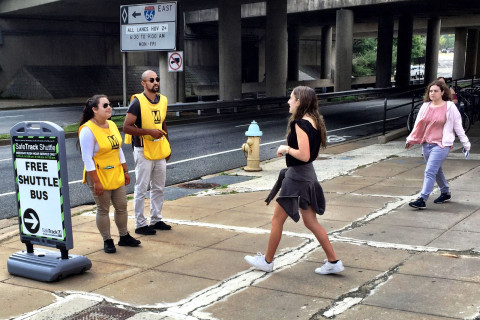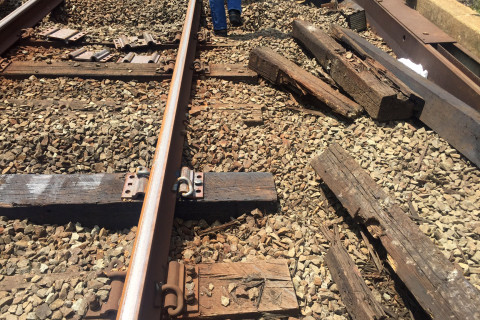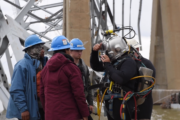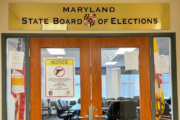WASHINGTON — For years, if not longer, Metro’s track inspectors were not doing the work they were supposed to, the transit agency’s safety officer said Thursday.
Track inspectors skipped key checks. And Metro failed to use a multimillion dollar piece of high-tech equipment to inspect critical locations where trains cross from one track to another before a train slipped off the rails last month near the East Falls Church Station, officials said during a special Metro board meeting to address a series of safety issues.
“They’re required to inspect those tracks twice a week,” Chief Safety Officer Pat Lavin said. “As they walk through those areas, they are not only supposed to walk the straight, or tangent track, they are supposed to walk into the crossover midway, examine the tracks in those areas, and then continue on with the walk. That, I do not believe, was occurring properly.”
“In addition to that, they’re supposed to do a 30-day inspection where they physically install a gauge and they measure at certain defined coordinates the gauge of the track. I do not believe that they were complying with that as defined inside the standards,” Lavin said.
About 75 riders were on the Silver Line train when it derailed on the morning of July 29. Repairs kept the East Falls Church station closed for several days. Crumbling railroad ties allowed the tracks to spread too far apart, Metro suggested earlier this month.
However the derailment is now the subject of a criminal investigation and Lavin did not say what crime is suspected.
Metro Board Chair and D.C. Councilmember Jack Evans asked whether the last detailed inspection before the derailment, completed in mid-June, had been falsified.
But Lavin did not specifically answer Evans’ question. Instead he said that a report had been submitted and that inconsistencies overall had led to Metro Transit Police’s investigation.
Delayed, incomplete inspections
Several days before the Silver Line derailment, the Rail Operations Control Center rejected a request from inspectors to access the interlocking near East Falls Church to complete a detailed 30-day inspection.
Lavin said the inspection should have been rescheduled for overnight hours because trains were already sharing a single track through the area to accommodate the repairs between the East Falls Church and Ballston stations. But the derailment occurred before the inspection could be done.
Inspections of the interlockings since the derailment found six significant issues, including one that immediately required the tracks to be taken out of service.
The last of those issues are expected to be corrected this weekend.
Other issues identified since the derailment have led to a series of weekend shutdowns that will include rebuilding interlockings in or near other areas scheduled for extensive repairs as part of Metro’s SafeTrack program.
Metro General Manager Paul Wiedefeld expects to announce in a few weeks more changes to the track work schedule.
Wiedefeld said Metro’s safety issues include problems with track inspectors, supervisors and others and go beyond a union or management issue.
A track geometry vehicle that can automatically detect problems with the track alignment had never been sent over interlockings other than those at the very ends of the lines, Wiedefeld said.
“It’s sort of like Groundhog Day,” Maryland Metro Board Member Michael Goldman said.
Last August, a train derailed near the Smithsonian Station even though the track geometry equipment had previously detected that the rails were too far a part — a serious problem. But the warning message from the machine was deleted and several Metro employees resigned as a result.
Metro Board Member Malcolm Augustine, who represents Prince George’s County, called all of the new safety concerns raised in a series of Federal Transit Administration reports and by the most recent derailment “very troubling.”
“Almost literally one year ago, we had this very same meeting … and we had the same kind of discussion about we should have done this, we should have done that … what has been done in the last year?” Augustine asked.
After the Smithsonian derailment, concerns were raised about a tool known as a gauge rod that is intended to temporarily hold the rails the proper distance apart until repairs can be made. Metro had been leaving the gauge rods in place far beyond the two to four weeks that is typically recommended.
New Chief Operating Officer Joseph Leader said Metro has cut in half the number of gauge rods in use systemwide over the course of this year by making repairs. He promised that Metro would follow through on future repairs within 14 to 30 days.







